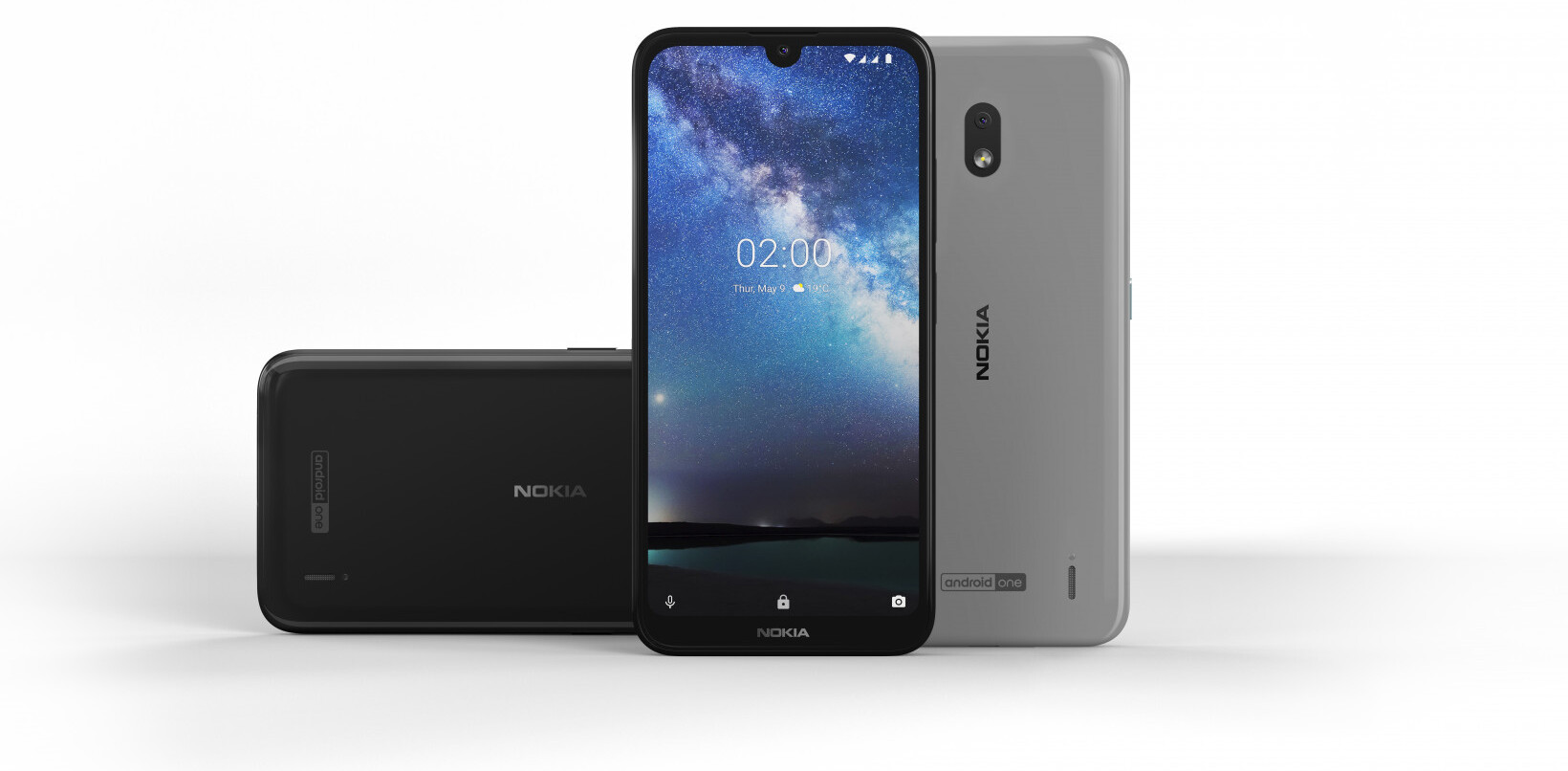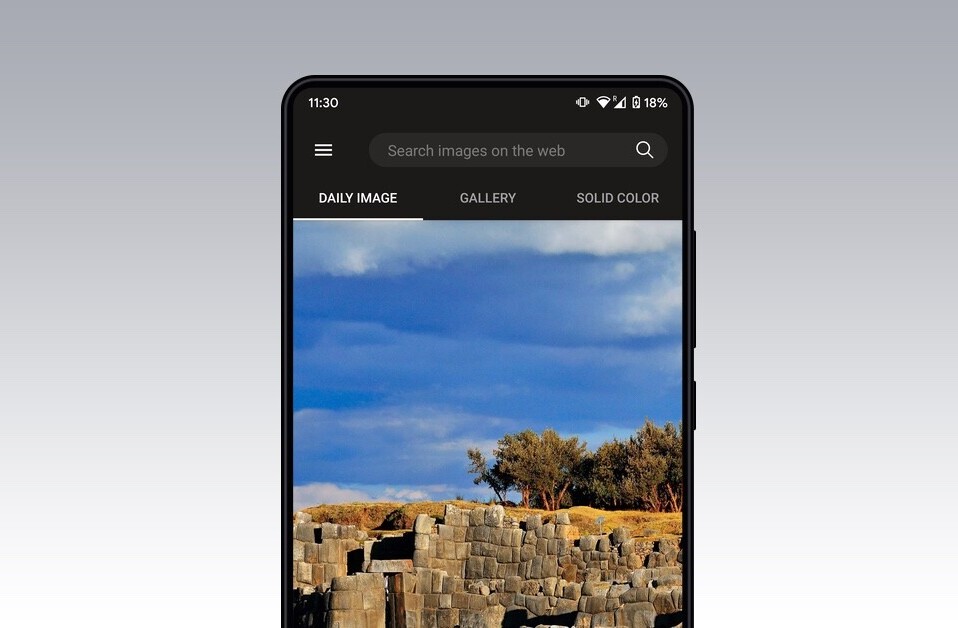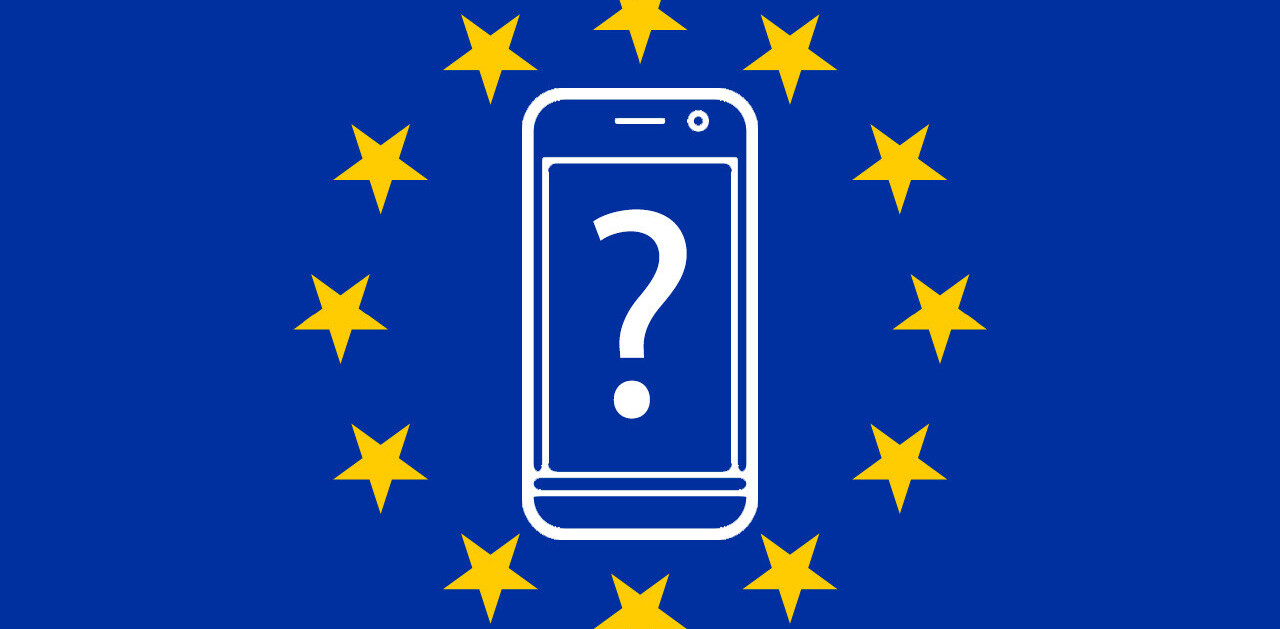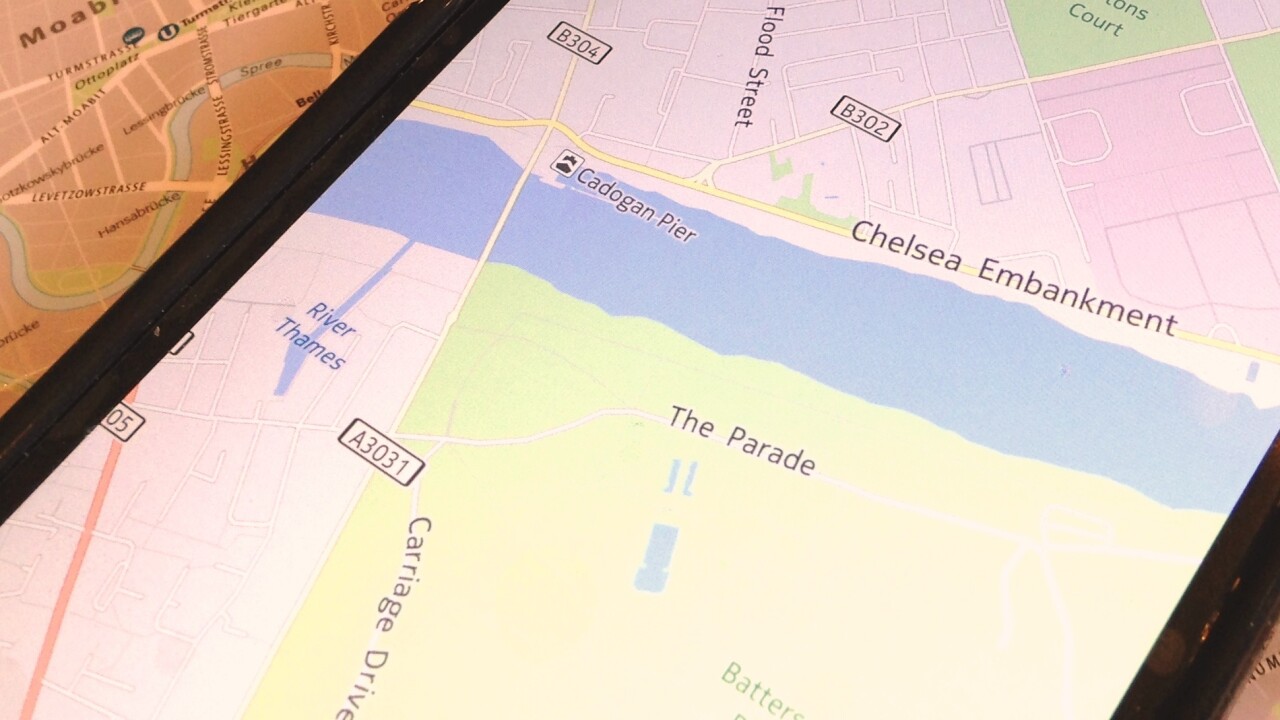
Nokia may have been gradually building out its mapping empire for more than 10 years, but it’s only now preparing to really ramp up its presence in the mobile navigation realm as it prepares to launch for Android and iOS this year, only months after selling its Devices and Services division to Microsoft.
But how did it all begin? Here’s a quick summary of how Nokia’s efforts have come to fruition.
A potted history of Nokia’s maps
The Finnish tech titan’s mapping efforts started to take shape in 2001 with its involvement in TellMaris, a consortium that pushed the Smart2Go 3D map interface, before Nokia went on to gain the rights to the software through its acquisition of mapping, routing and navigation company Gate5 in 2006. The following year, Nokia revealed it was making the Smart2Go application free to download for select Nokia and Windows Mobile devices, bringing mapping and routing to 150 countries, with turn-by-turn navigation in more than 30 markets.
Perhaps the pivotal moment in Nokia’s onward march in the mapping sphere came in late 2007, when it snapped up Chicago-based NAVTEQ in a deal worth more than $8 billion. As one of the leading providers of digital map data for in-car navigation systems, mobile devices, online applications and more, NAVTEQ was very much a future-gazing move from Nokia.
Following a handful of further acquisitions, Nokia launched 3D maps covering 20 cities in early 2011, and bought street-level 3D mapping company Earthmine a year later.
Meanwhile, Nokia had rebranded Ovi Maps as Nokia Maps in May 2011, before pulling all its location and mapping services under the HERE banner in 2012, an occasion marked by the launch of its first native app on iOS. However, the iOS relationship came to an end when the app was pulled a year later for technical reasons (more on that later).
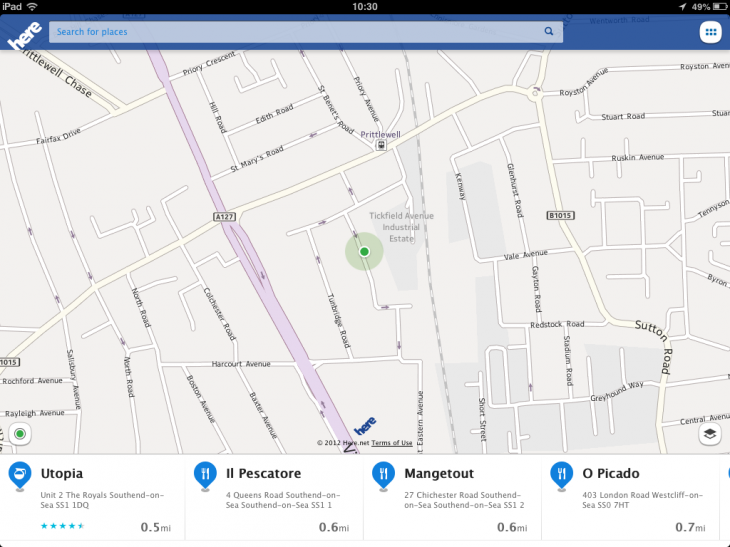
Today, Nokia’s HERE Maps is regarded as one of the four big guns in the global online mapping space, alongside Google Maps, TomTom and OpenStreetMap. Other brands you may be familiar with typically use one of the aforementioned companies’ maps, including Apple, which largely uses TomTom, though also taps additional third-party data from the likes of OpenStreetMap.
No longer tethered to its mobile phone dominance, Nokia is beginning to push HERE maps out into the connected devices ecosystem. A tie-up with Samsung announced in late August, revealed that HERE would be bundled with its new Gear S Tizen smartwatch, serving up turn-by-turn navigation on your wrist. The following day, it was announced that HERE would finally arrive in native form for Android phones – replete with offline maps – though exclusively on Samsung Galaxy devices initially.
Nokia has been teasing updates ever since, including the news that HERE would return to iOS by the end of the year, and would be made available on all Android devices too.
It’s not all about mobile phones of course – Nokia has also started beta testing a new version of the Web-based HERE service, with a focus on context and discovering new places.
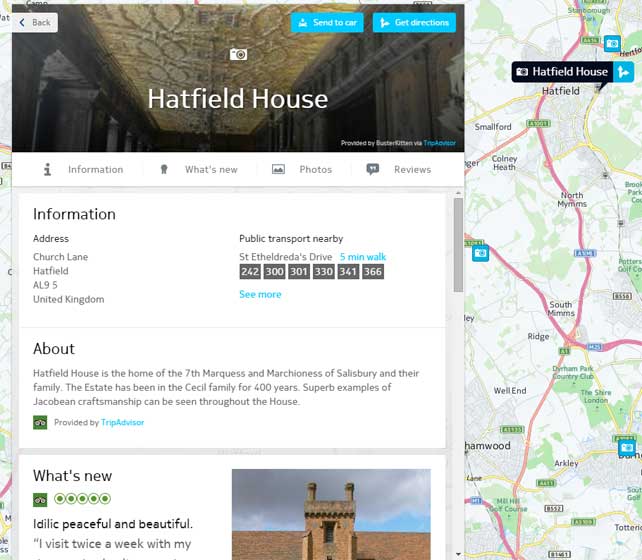
By the end of 2014, Nokia could have an omnipresent mobile mapping brand on its hands, with full offline maps and navigation available across Android, Windows Phone and iOS, and a retooled and retuned Web incarnation too.
The Next Web caught up with Sean Fernback, Senior Vice President, Everyday Mobility, at Nokia’s HERE division, to get the lowdown on where things are currently at, and where they could go from here.
Presence
HERE’s presence across the mapping spectrum is more extensive than you might think, thanks to licensing tie-ups with the likes of Amazon, Microsoft (Bing Maps), Yahoo (Yahoo Maps) and Garmin. HERE also has a big in-car presence with automotive giants such as BMW and Mercedes – in fact, it may surprise you to learn that Nokia lends its mapping data to 80 percent of in-car navigation systems.

Earlier this year Nokia announced a $100 million fund to invest in automotive technology and services, a ‘Connected Car Fund’ fund managed by Nokia Growth Partners (NGP) and aligned closely with the HERE mapping division. The ultimate remit is to “…identify and invest in companies whose innovations will be important for a world of connected and intelligent vehicles.”
If you don’t use HERE in your car, you’re probably most familiar with the maps from Nokia’s and Microsoft’s handsets, or you perhaps have used them via the mobile Web on other devices too. But as noted already, things are about to change, as Nokia gears up to push HERE out across the smartphone fraternity.
“It was always the ambition to be on Android, we just took a decision at the beginning of the year to accelerate the program,” explained Fernback, in a frank opening to our interview. “And also to ensure when we talk about apps, we’re serving both common platforms, which is, of course, Android and iOS.”
Wait… so does this mean that Windows Phone is being given the elbow now that the Microsoft/Nokia partnership has come to an end? HERE maps wasn’t part of the deal, after all.
“As a result of the transaction, we’re having to wind down our Windows Phone app development and shift it over towards Android and iOS,” explains Fernback.
Fernback did stress that support for Windows Phone isn’t being phased out completely, not at the moment at least. It’s just limiting the resources it throws at the platform, including time and money spent developing for it. “It’s a dialogue we’re having [with Microsoft], so we will see where it takes us,” he continues.

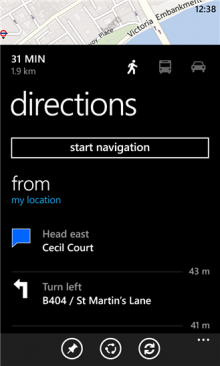
Another quirk in the Nokia/Microsoft partnership was the recent launch of an Android-based smartphone called Nokia X. With the acquisition yet to be finalized at that point, Nokia was authorized to pursue the development of the program even though an Android-based Nokia phone was clearly at odds with Microsoft’s interests. Indeed, Microsoft has subsequently started switching some of these products over to the Windows Phone realm since the acquisition was completed.
So now that Nokia has parted ways with Microsoft and is pursuing its other interests, does this mean that there has been a complete change of focus within the HERE division?
“Not really, partly because today we still maintain the [HERE] Windows Phone apps, it has our brand on it so we need to look after it,” says Fernback. “Although we’re not particularly investing in them at the moment, that could still change. With the Nokia X program, we were authorized to continue to work on it until about now really, but that work is about to cease. I think there have been a number of different programmes that have continued through the year onto different platforms, but now it’s just going to focus on the two – Android and iOS.”
‘The big two’
Okay, so Android and iOS it is. And it does make perfect sense, given their mobile market share. But what about HERE’s previous flirtation with iOS that fizzled out, can we expect much to be different this time around?
It’s probably worth looking back at the circumstances around what happened in late 2013, shortly after iOS 7 rolled out. It turns out this was the crux of the problem for the HERE app, though Fernback was quick to point out that it was very much an in-house error that led to the problem with the app, and Apple wasn’t to blame.
“We basically made a silly mistake – when iOS 7 came out, there was a change in how the pixels were rendered, and it wasn’t very well tested this end – when you pinched-to-zoom, you got this terrible effect,” explains Fernback.
For the upcoming Android app launch and the subsequent re-arrival on iOS, Nokia and HERE will be using a common codebase, and as such the iOS version will have a different codebase to the one it was built with initially in 2012. So hopefully, things will be a lot more smooth this time around.
“It’s a ground-up development, and Android is a greenfield development, as is iOS,” adds Fernback. “We have a master codebase which, the way we’ve structured it, means it’s platform agnostic. So if we decide that we want to invest in the Windows Phone app again, we would take that new codebase and compile it for Windows.”
Uphill battle?
Though Google pretty much has maps sewn up already on Android, and has a firm footing on iOS too, doesn’t HERE face an uphill battle to win the hearts and minds of the masses? Perhaps it does, but it will come armed with a big differentiator when it launches – completely free offline mode.

By offline mode, we mean you will be able to download entire countries and continents to your device without paying a penny, which will be particularly useful for those traveling abroad, or those who are otherwise concerned about their data consumption. And we’re told that there will more-or-less be feature parity between the Android and iOS incarnations, so there should be a fairly consistent experience on both platforms. However, Fernback stresses that the version arriving this year is just the beginning.
“It’s a long program – what we ship this year will be the start of what will be a great product,” he says. “We’re not trying necessarily to compete with others, or follow others, we’re trying to look at the needs and problems we’re trying to solve for consumers in urban mobility and mobile navigation.
“Wait and see, we’ve got some nice ideas, we’re trying to look at some unique problems that others possible aren’t solving, and I’d like that to remain a surprise.”
What was a surprise was that the Android launch will be a Samsung exclusive initially. So how did this tie-up come about?
“I was looking at some of the accounts, I came across Samsung and thought, ‘we’ve been talking to Samsung for many years, but haven’t done anything with them,” says Fernback. “So a group of us went down to see them in South Korea, and we just had a conversation with them. We came up with an idea to do a navigation app on Gear with Tizen, and we did a mock-up with a little video. They loved it.”
It transpires that HERE for Android didn’t exist at all 14 weeks ago – it was pretty much a video and a PowerPoint presentation. Though the iOS app isn’t quite ready yet, it seems the Android one is pretty much good to go. “We just used the existing workforce who did a bit of Android training, read the books and so on,” adds Fernback.
Show me the money
Offline maps is a great boon and a big selling point for HERE on both Android and iOS, but what are the plans to make money from it? Will downloads eventually cost money?
“I want the focus to be on building a great product and build a big user-base, then we can talk about how we might want to monetize,” explains Fernback. “Look at Facebook and advertising, it had been kicking about for a few years before it started advertising because it then had critical mass. I think advertising is an example, but there are many things we could look at that could create value for consumers as well as monetization for us.”
Whether Nokia can make big inroads on Android and iOS, stealing a piece of the Google Maps pie, remains to be seen. But fresh from its acquisition of personalized travel planning platform Desti, it seems the wheels are very much in motion to create a more-than-viable cross-platform alternative.
Nokia’s HERE should be landing for Samsung Galaxy devices shortly, with support for iOS and other Android devices to follow by the end of 2014.
Related read: The rise of OpenStreetMap: A quest to conquer Google’s mapping empire
➤ HERE
Get the TNW newsletter
Get the most important tech news in your inbox each week.

